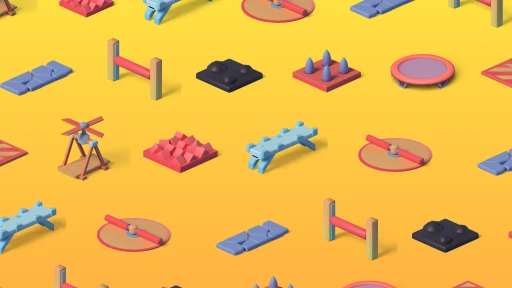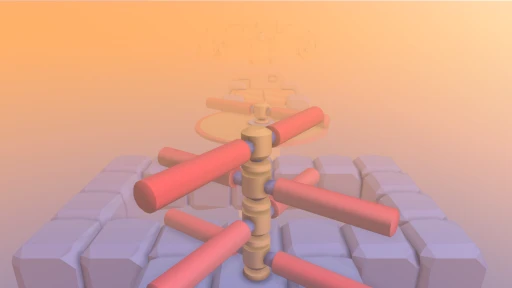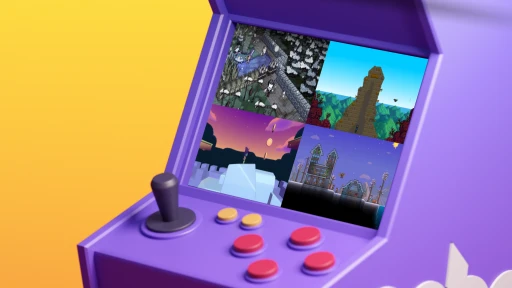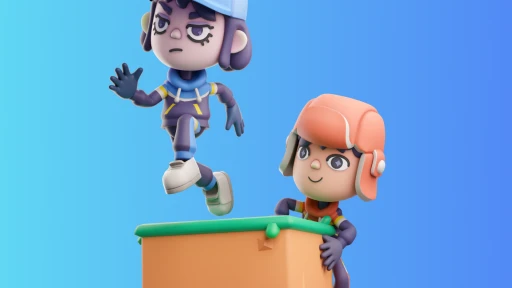Building your world is like using a digital canvas to transfer where the realms in your imagination can come to life.
Whether you're a beginner designing your first pixelated planet, an intermediate developer sculpting detailed
landscapes, or a pro building intricate games, this article will help enhance your world building skills.
After all, world building is one of the most important (and overlooked) parts of making a
game . In this article, we’ll cover the three fundamental components of world building: story, gameplay, and
artwork. Plus, we’ll take you from beginner all the way to advanced.
Let’s begin.
What is world building?
World building is the art and science of constructing an imaginary universe, complete with its unique history,
geography, and ecology. This setting is the game world, the stage upon which all your game's
events unfold, and characters interact.
From the misty mountains of Skyrim to the neon-lit streets of Night City in Cyberpunk 2077, game worlds carry the heart
and soul of the game narrative. They contribute to the player's engagement and satisfaction, making world building
essential for captivating game experiences.
World building strays into two different types based on the game type: map building or level building. Here are some
definitions to make it clearer:
Game world: The imaginary universe in which the game takes place.
World building: Developing an imaginary setting with coherent qualities such as
history, geography, and ecology is a key task for many game designers, artists, and writers.
Map building or level building: Bringing a game space or world to life by placing
environment pieces and characters and adding scripts. It’s a world building approach.
Game map: In open-world games and competitive games, e.g. Fortnite.
Game level: More linear game spaces e.g. for puzzles or narrative-focused
experiences.
Level design: A more conceptual approach to level building, focusing on difficulty
and game experience.
Environment art: A game environment artist is a creative who designs and builds
props, scene elements, and landscapes for video games.
Game experience: The linear way how a player perceives the game when playing it.
Environmental storytelling: Environmental storytelling is the art of arranging a
careful selection of the objects available in a game world so that they suggest a story to the player who sees them.
Gameplay: Interactions, game mechanics, and features as they are perceived by the
player during the game.
Starter level world building
World building at the starter level may seem challenging, but it's really about laying a solid foundation. The three
fundamental aspects of building a game world at this stage include establishing a theme, creating a storyline, and
developing an aesthetic.
The theme of your game world will guide all your decisions. It can be as broad as "fantasy" or as specific as
"steampunk vampire apocalypse." A clear theme unifies the game and makes the world more immersive.
The story shapes your world. It doesn’t need to be complicated, it just needs to be clear. For example, the speedy
blue hedgehog Sonic is on a mission to stop the evil Dr. Robotnik from taking over the world.
The aesthetic makes your world visually cohesive. This might mean designing alien flora and fauna for a sci-fi game or
using a pixelated design for a retro game.
Next, you’ll need to incorporate your theme, story, and aesthetics into your game world. These include items like
buildings, trees, cars, or anything else that fills out your world and fits your theme. Think of it as the 'set
dressing' of your world.
Lastly, you’ll introduce your gameplay, like interactions and obstacles. For instance, you might include NPCs in your
game or use a jump-pad-esque game asset for players.
That's the basic level of world building — but there's a lot more you can do as you gain experience and start to
tackle larger projects.
Intermediate level world building
The intermediate level is where your game will start to feel alive. You’ll get a better idea of how your game will
look once created. First, layout and scale become crucial. Your game world needs to make sense spatially. This means
considering the size of buildings compared to characters, how long it takes to travel from one point to another, and
making sure the layout of your world is intuitive.
For instance, you don’t want to make your game world so large if you only have a team of one. It might take too long
to make your game because of the size.
Next, it’s time to bring your world to life. This involves placing characters and enemies, adding scripts, and
unlocking areas. It's about creating a dynamic world that responds to the player.
For example, in a game like The Legend of Zelda: Breath of the Wild, the game world is filled with NPCs who have their
own routines, enemies that patrol certain areas, and treasures that can only be accessed after certain conditions are
met.
Another part of bringing your world to life is setting conditions. If a player reaches a certain level or location, they
unlock the next level. Conditions help keep the player engaged, searching for the next conquest.
Pro level world building
At this level, world building in game design becomes a profound blend of artistry and technical prowess. Every element
is honed to the finest detail, serving the broader themes of your game.
The first three complementary parts of pro level world building include: game experience, pace, and difficulty. How your
game unfolds and challenges players (via world building) will significantly impact their experience.
For example, the Pokemon games do an excellent job of pacing difficulty with their leveling system. It helps keep
players persistent and engaged. Additionally, with each version of Pokemon comes a different and unique game experience.
Next, environmental storytelling involves using the environment, props, and non-verbal cues to convey your game’s
story. Sometimes they’re obvious and other times, they’re Easter Eggs planted by the developer that not all players
will find. But the extra touch adds to the game.
Every detail in your game contributes to the theme, story, and aesthetic. And at the pro level, it’s about dedicating
time and effort to making the player feel special. Think about the times you saw something in the details of a game that
made you smile — that’s what pro level world building is all about.
Mobile world building
As you can see, there is a lot that goes into building your game world. But don’t worry, it doesn’t take a bunch of
expensive equipment or a college degree with 20 years of experience. In fact, with Soba you can do it with no experience
right on your phone .That’s right! Before Soba came along, the idea of creating
a game world on your phone was just crazy. But now you can. All you need is your phone, the Soba app, and a great idea.
Easy!
Final thoughts
World building in game development is much more than just designing a map or placing objects. It's about creating a
living, breathing universe that players can dive into, explore and interact with.
As you advance your skills, remember to weave in environmental storytelling , as the details can bring your game to life. Soba simplifies the world
building process by providing an intuitive and easy-to-use platform to build your own personal game. Create an engaging
world, customize your rules, and play your game with friends, family, and even the rest of the world!
Download the Soba App today!



